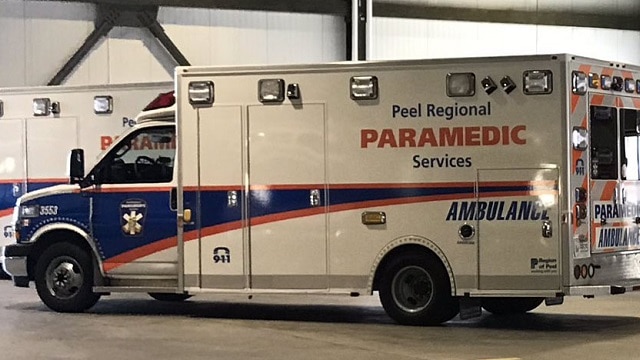Up to $3 million in extra funding will support ambulance services in Mississauga, Brampton and Caledon
Published September 14, 2023 at 2:43 pm

Peel Region has received millions of dollars in additional funding to help keep ambulances running in Mississauga, Brampton and Caledon.
The province’s Ministry of Health recently stated it will provide up to $3,077,950 in additional funding to the Region for the 2023 calendar year via the 50/50 Land Ambulance Services Grant (LASG).
This will bring the total maximum base funding available under the Agreement for the 2023 calendar year up to $59,860,327.
“We continue to rely on your strong leadership in alignment with the plan to build a modern and sustainable public health care system and ensuring the ongoing provision of front-line services that patients rely on every day,” wrote Ontario Health Minister Sylvia Jones in a letter to Regional Chair Nando Iannicca.
The LASG covers half of a municipality’s expenses to run its ambulance services. The government touts this as part of its “commitment to building a modern, sustainable and connected emergency health system.”
The funding is much needed in the Region, where ambulance services have been struggling to meet demand. It was recently reported that several residents in Mississauga have experienced waiting 30 minutes for an ambulance to arrive, or even up to 90 minutes in more extreme situations.
That includes an incident where two sisters say their 95-year-old mother fell and fractured her hip while at an appointment at Villa Forum Long Term Care Residence in Mississauga back in April. The sisters said they called 911 four times and had to wait for an hour and a half with their mother in pain before an ambulance arrived and took her to the hospital.
In a separate incident in May, an elderly woman fell on the street at Hurontario Street and Lakeshore Road in Port Credit and waited over half an hour before the ambulance came.
Peel Region isn’t the only part of Ontario seeing these issues — several municipalities in the province have said their paramedic services are under immense pressure, with worrying stretches of times during which no ambulances are available to respond to calls.
Some emergency officials and community leaders say more needs to be done to help paramedic services, but the lack of publicly available provincial information makes it hard to assess the scope of the problem.
“We just want to be able to have a baseline to say, ‘Oh, things have improved since 2020, since 2018,’ and being able to quantify the data so that when we do go to the province, or to our employers, we want to be able to go with solutions,” said Niko Georgiadis, chair of the CUPE Ambulance Committee of Ontario.
INsauga's Editorial Standards and Policies